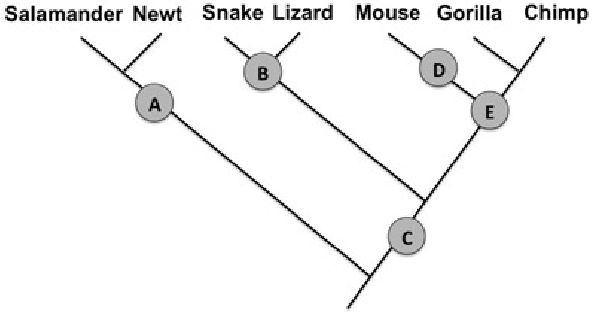You have been asked to design a synthetic DNA motif, able to bind transcriptional regulatory proteins. The location on this motif that you will design for protein binding is the
A. sugar backbone of the DNA double helix.
B. phosphate backbone of the DNA double helix.
C. available hydrogen-bonds of bases in single-stranded DNA.
D. major groove of the DNA double helix.
E. minor groove of the DNA double helix.
Answer: D
You might also like to view...
A frog should be added to the phylogeny above at point

A. A.
B. B.
C. C.
D. D.
E. E.
Clarify Question
· What is the key concept addressed by the question?
· What type of thinking is required?
· What key words does the question contain and what do they mean?
Gather Content
· What do you already know about cladistics?
Consider Possibilities
· Consider the different answer options. Which can you rule out?
Choose Answer
· Given what you now know, what information and/or problem solving approach is most likely to produce the correct answer?
Reflect on Process
· Did your problem-solving process lead you to the correct answer? If not, where did the process break down or lead you astray? How can you revise your approach to produce a more desirable result?
One of the properties of genes is that they can "recombine." This refers to their ability to ____
A. be transmitted from parents to children B. move from one chromosome to another C. be turned on and off D. undergo changes E. break into pieces and then reassemble
Which one of the following is a lipid?
A) cholesterol B) alanine C) maltose D) glycogen E) cellulose
Founder effects and bottlenecks are ___________.
a. expected only in large populations b. mechanisms that increase genetic variation in a population c. two different modes of natural selection d. forms of genetic drift